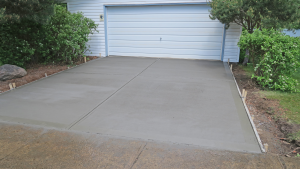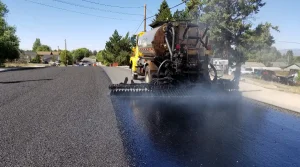If you own property, are a developer, or run a business, it’s essential to understand the rules about how land can be used and developed. Two crucial types of rules are zoning and paving regulations. These rules tell you what you can do with your land and how you should do it to make sure everything is safe and works well. This blog will explain zoning regulations, give an overview of standard zoning rules, show how zoning and paving regulations are connected, and discuss why knowing about both is essential for your projects.
Looking for a reliable paving company in Jersey City? Look no further!
We offer experienced, professional paving services with quality results at prices that fit your budget. Don’t risk your project with inexperienced hands—your property deserves the best. Choose Jersey City Paving! Call us today at (201) 977-4882.
What Are Zoning Regulations?
Zoning regulations are rules made by local governments to control how land is used in different areas. These rules divide a city or town into zones, with each zone having its own restrictions on the kind of structures and activities that are permitted. The main goals of zoning are to keep neighborhoods organized, protect property values, and ensure the community’s safety and health.
Usually, zoning regulations divide land into categories like residential (for homes), commercial (for businesses), industrial (for factories), and agricultural (for farming). Each type of zone has its own rules about what can happen there. For example, a residential zone might only allow houses, while a commercial zone could allow shops, restaurants, and offices. By setting these rules, zoning helps prevent problems like factories being too close to homes, which could cause noise, pollution, or safety issues.
Zoning Regulations Overview
Zoning regulations can be different depending on what a community wants, but most zoning rules include the following:
- Zoning Districts: Cities and towns are divided into different areas called zones or districts. Each zone is meant for specific uses, like housing, shopping, or factories. These zones are created based on a plan showing how the community wants to grow. Zoning districts can have more detailed categories, like single-family homes or apartments.
- Land Use Regulations: These rules say what kinds of buildings or activities are allowed in each zone. For example, a residential zone might not enable businesses to keep the area quiet and safe for families. Industrial zones might not allow homes to protect people from noise and pollution. Sometimes, zoning allows for mixed-use, combining different types of buildings, like shops on the first floor and apartments above.
- Building Regulations: Zoning rules control how big and tall buildings can be and where they can be placed. These rules ensure new buildings fit in with the area and avoid problems like blocking sunlight or overcrowding. For example, there might be height limits in a neighborhood with primarily single-story homes or rules about how much of a lot a building can cover.
- Setback Requirements: Setbacks are the minimum distances from buildings from property lines, streets, or other buildings. These rules help keep spaces open, provide light and air, and reduce fire risks. Setbacks also help ensure privacy and reduce noise between neighbors. For example, a home might have to be set back a certain distance from the road and nearby houses.
- Density Controls: These rules limit how many buildings or homes can be built in a particular area. Density controls help prevent overcrowding, traffic jams, and strain on services like water and electricity. For instance, low-density zoning might only allow a few houses per acre, while high-density zoning allows many apartments in the same space.
- Special Use Permits: Some land uses need special permission from the government, especially if they don’t fit typical zoning rules. Examples include schools, hospitals, and churches in primarily residential areas. Particular use permits allow flexibility, letting important buildings be built where needed, but often with rules to minimize their impact, like limiting how late they can operate.
How Paving Regulations Intersect with Zoning
While zoning rules control land use, paving regulations deal with how paved surfaces like driveways, parking lots, sidewalks, and roads are built and maintained. These rules are essential for safety, water drainage, and environmental protection. Here’s how paving regulations connect with zoning:
- Parking Requirements: Zoning rules often say how many parking spaces different types of buildings need. For example, a store might need one parking space for every 300 square feet. Paving rules ensure these parking areas are built to the correct size, are safe, and have proper drainage to handle rainwater.
- Driveway Regulations: Zoning rules say where driveways can go, and paving rules say how to build them. Zoning might require driveways to be placed in certain spots to be safe and accessible, like having enough space to see oncoming traffic. Paving rules ensure the driveway is made of solid materials and has good drainage to prevent water buildup.
- Stormwater Management: Both zoning and paving regulations often include rules about handling stormwater to prevent flooding and water pollution. Zoning might require specific types of paving that let water soak into the ground, like permeable pavers. Paving rules provide details on building these surfaces to ensure they work well.
- Accessibility Standards: Zoning laws require that buildings and their surrounding areas are accessible to everyone, including people with disabilities. Paving regulations must follow standards like the Americans with Disabilities Act (ADA) to ensure pathways, parking lots, and entrances are safe and accessible for everyone.
Why Understanding Both is Important for Property Owners, Developers, and Businesses
Knowing the zoning and paving regulations is essential for property owners, developers, and businesses because:
- Legal Compliance: Following these rules helps avoid fines, legal problems, and project delays. Follow the rules to avoid making expensive changes, paying fines, or even tearing down buildings that don’t meet the requirements.
- Project Efficiency: Understanding zoning and paving rules from the start can make it easier and faster to get your project approved, saving time and money. Knowing the rules, you can plan better and avoid problems later on.
- Property Value: Building according to the rules can increase your property’s value by ensuring it’s well-designed and fits in with the community. Properties that follow the rules are more attractive to buyers, renters, and investors.
- Community Relations: Following local rules shows that you care about the community’s goals and helps you get along better with neighbors and local officials. A good relationship with the community can lead to easier approvals for future projects and a positive reputation.
Conclusion
Zoning and paving regulations are essential for managing land use and development in a community. By understanding and following these rules, property owners, developers, and businesses can make sure their projects are legal, protect their investments, and help their communities grow safely and organized. Before starting any project, take the time to learn about the applicable zoning and paving rules. This will enable you to more successfully accomplish your goals and successfully, whether you’re building a new structure, expanding an old one, or improving.







